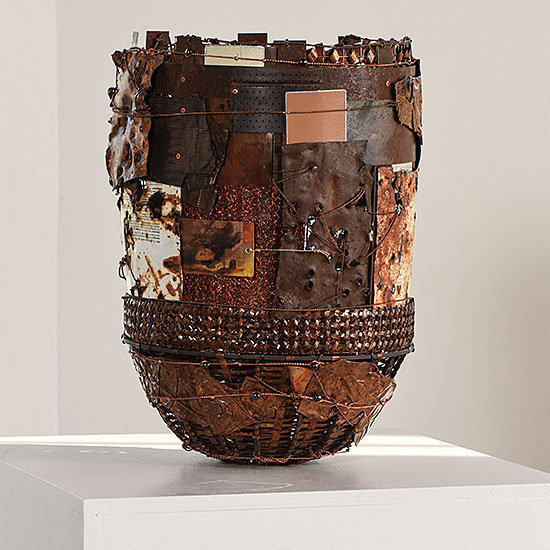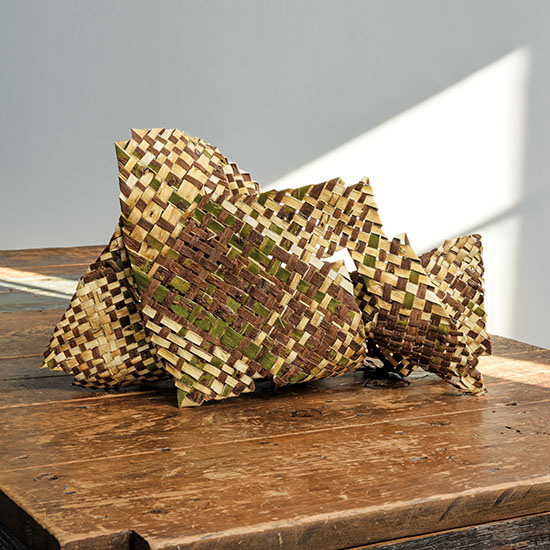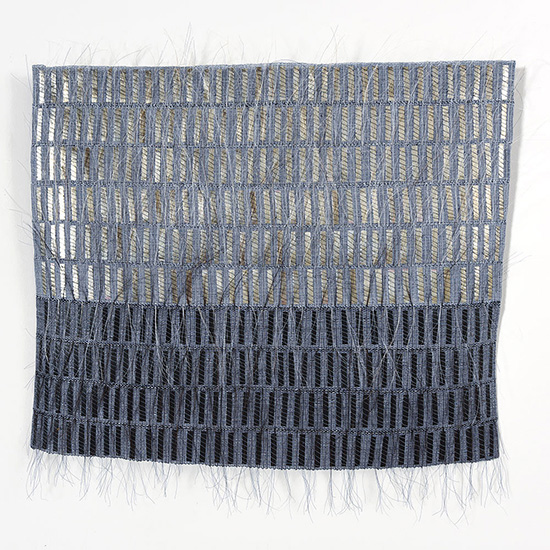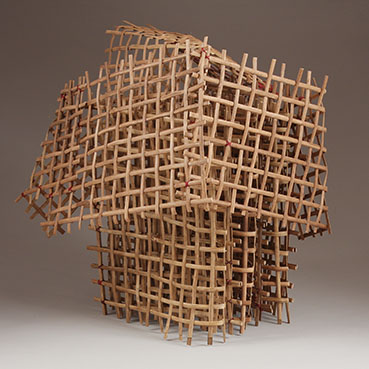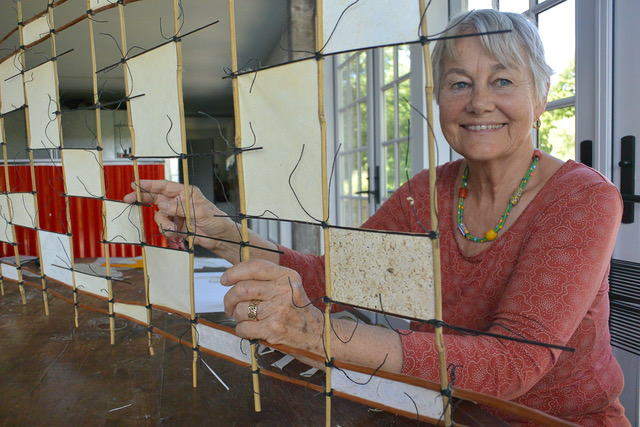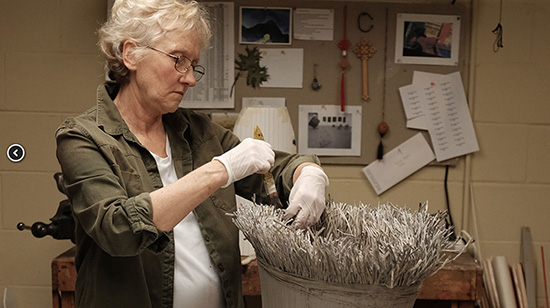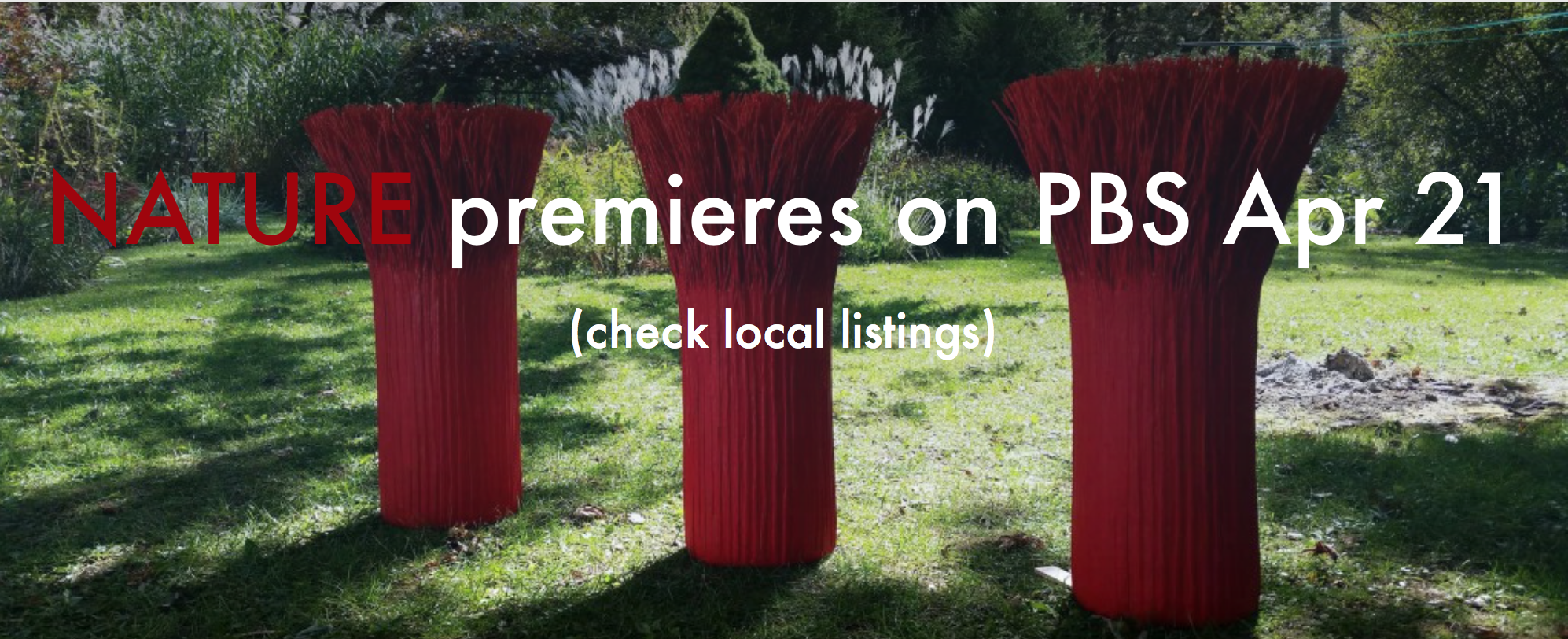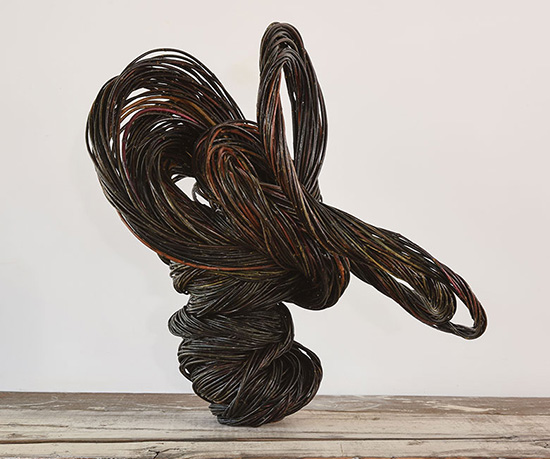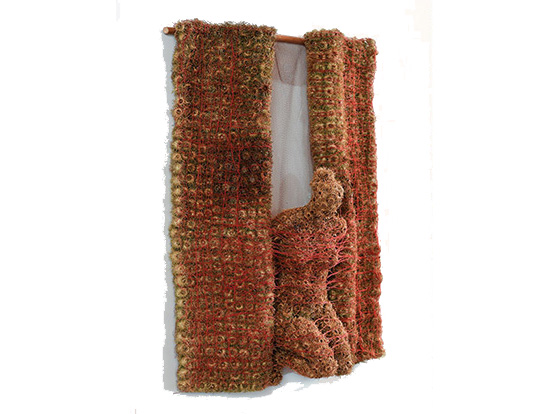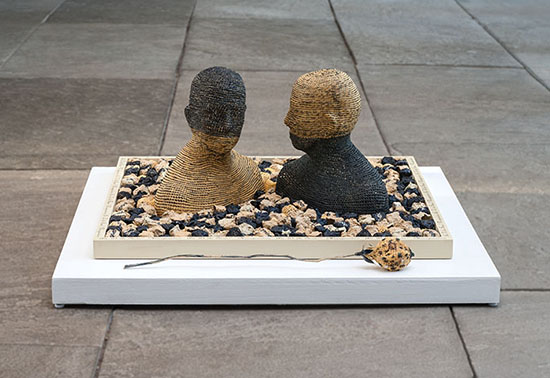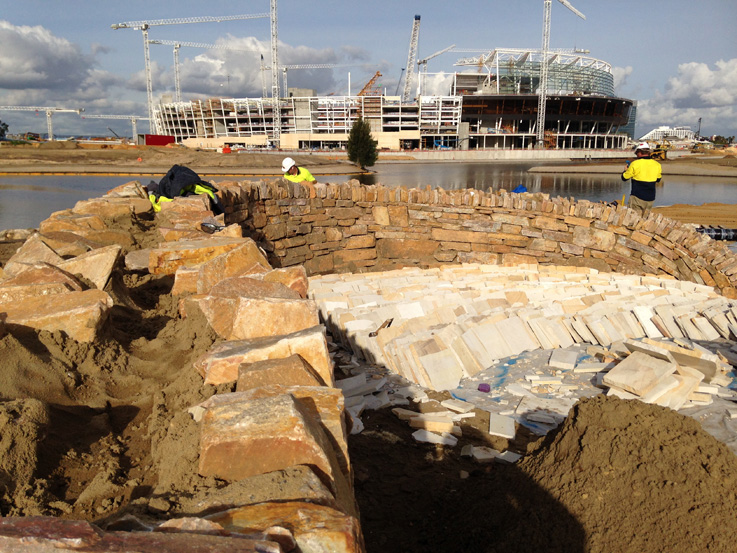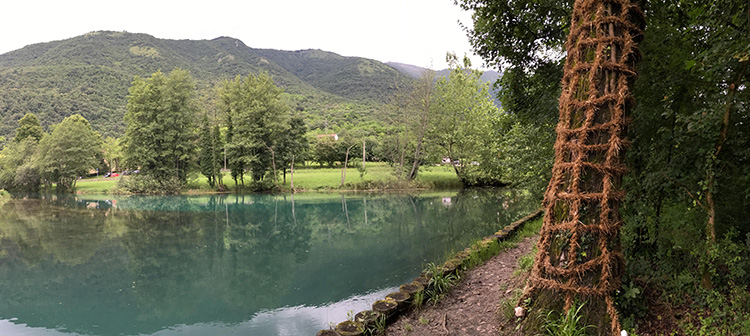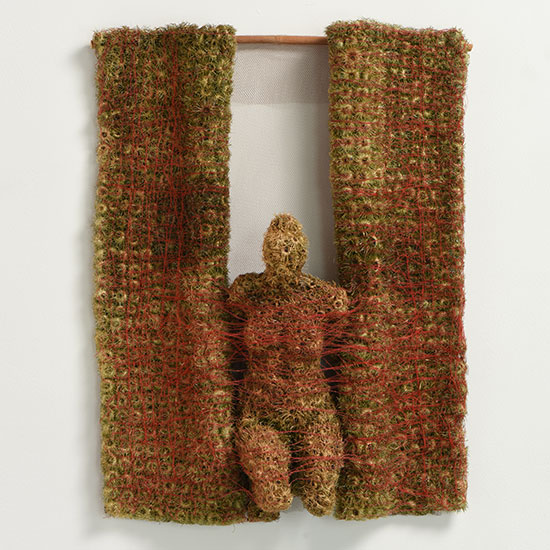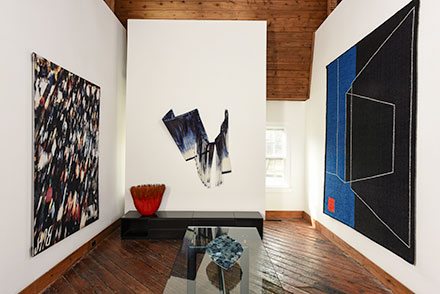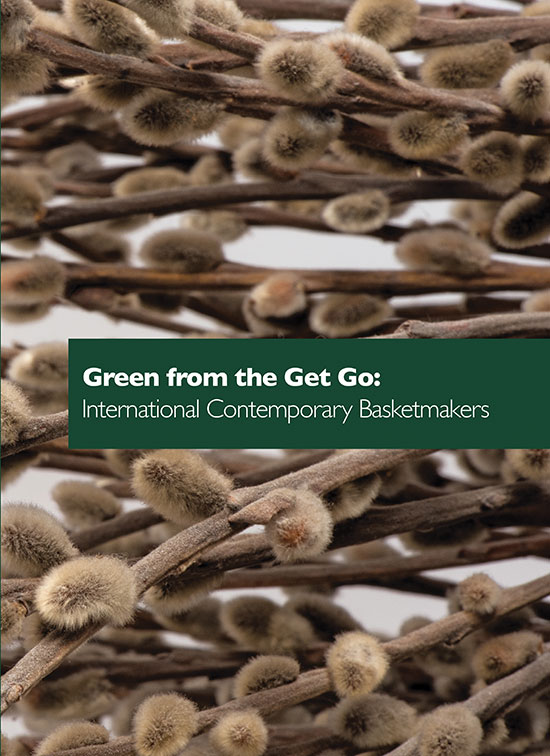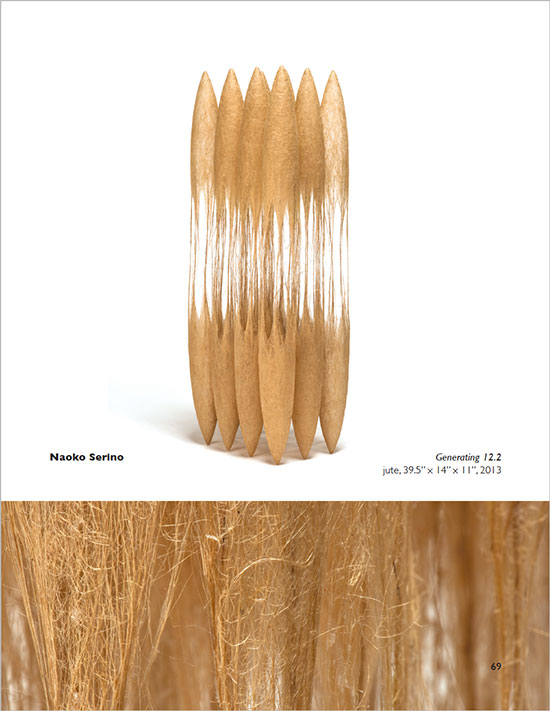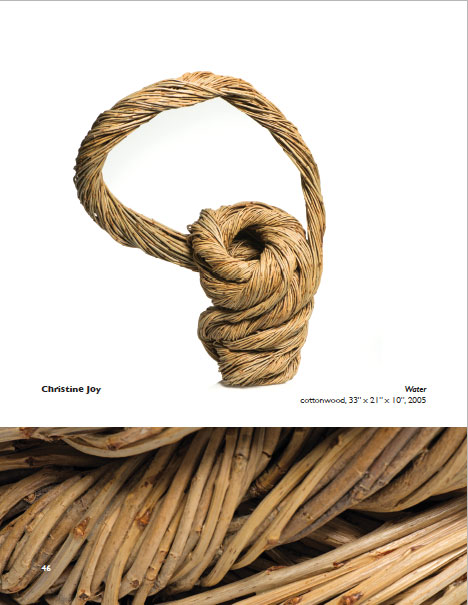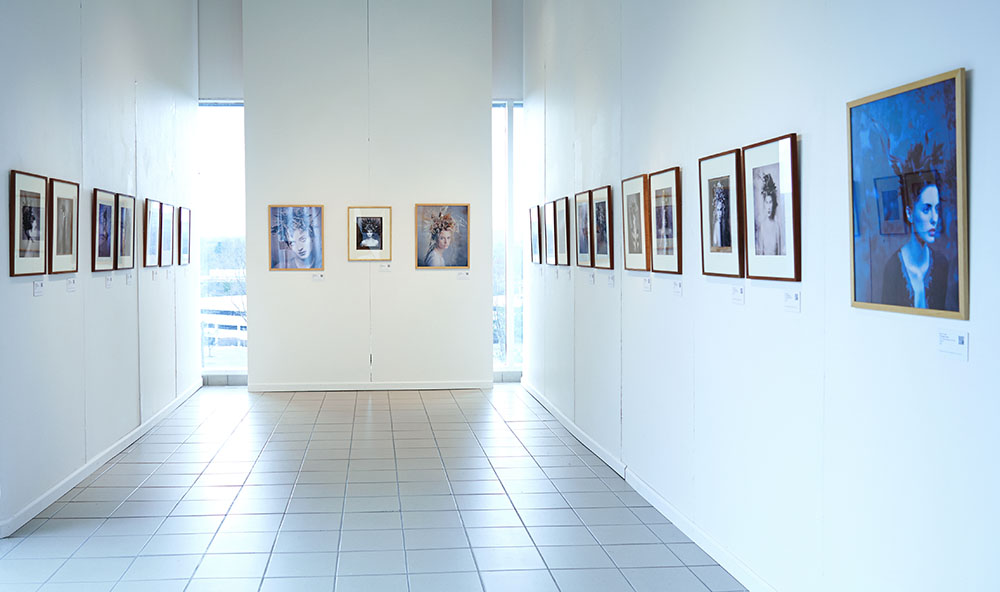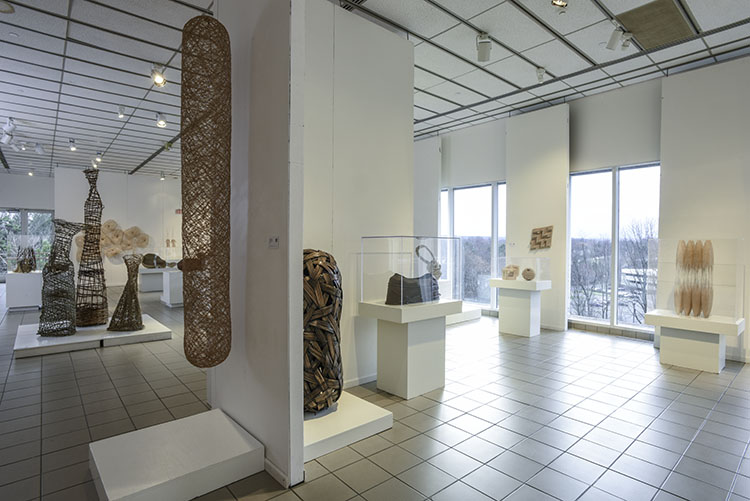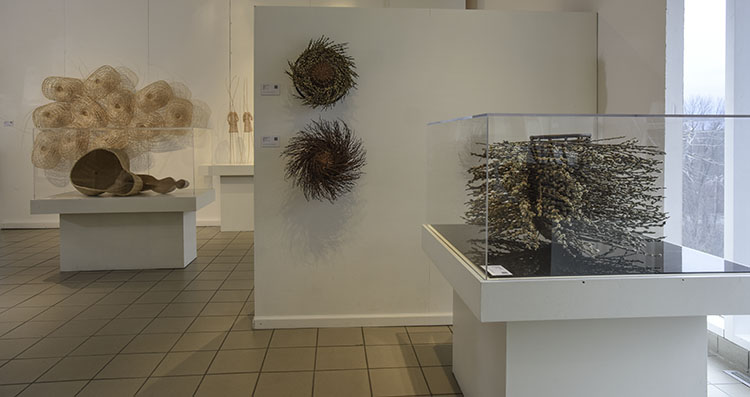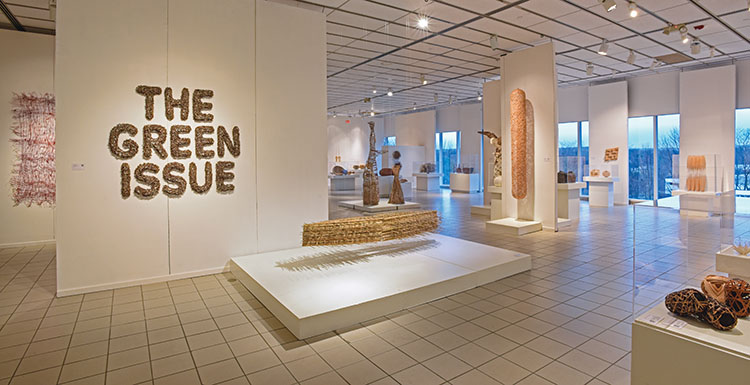For our 30th Anniversary exhibition, Still Crazy After All These Years…30 Years of Art, Hisako Sekijima provided us Structural Discussion VI, a work made in 2016. In 1994, the first year Sekijima showed with browngrotta arts, we sold another work from the Structural Discussion series, #312, which she had made 30 years before in 1987. Even as she addresses a single theme, Sekijima’s use of varied materials and approaches makes the results of these explorations remarkably diverse.

Portrait of Hisako Sekijima at her first solo exhibition with browngrotta arts in 1994; baskets of Kudzo vine, walnut, cedar, cherry bark, hackberry shavings and willow bark. Photo by Tom Grotta. The exhibition was reviewed in The New York Times, “Cherishing the Space and the Forms that Define It,” Bess Liebenson, July 1994.
“In the 40 years I have been working with baskets, my concerns have extended beyond basket topics toward sculptural ones. Not only I have used rather common basket materials including tree barks, vines, splints of bamboo or woods, but also I have chosen extended concepts of vessel forms with negative spaces and linear constructions. Both of my aesthetic and technical ideas such as revaluing negative space and examining the natural property of materials are illustrated in my explorations into the nature and history of basketmaking. It brings me a deeper understanding of physical rules of interplay among materials’ property, constructing method and a form, while it brings me a tactility or real touch of abstract ideas of numbers/counting, time, order, and etc. With coordination of hands, spirits and sense, physical experiences and conceptual ones come together in baskets.
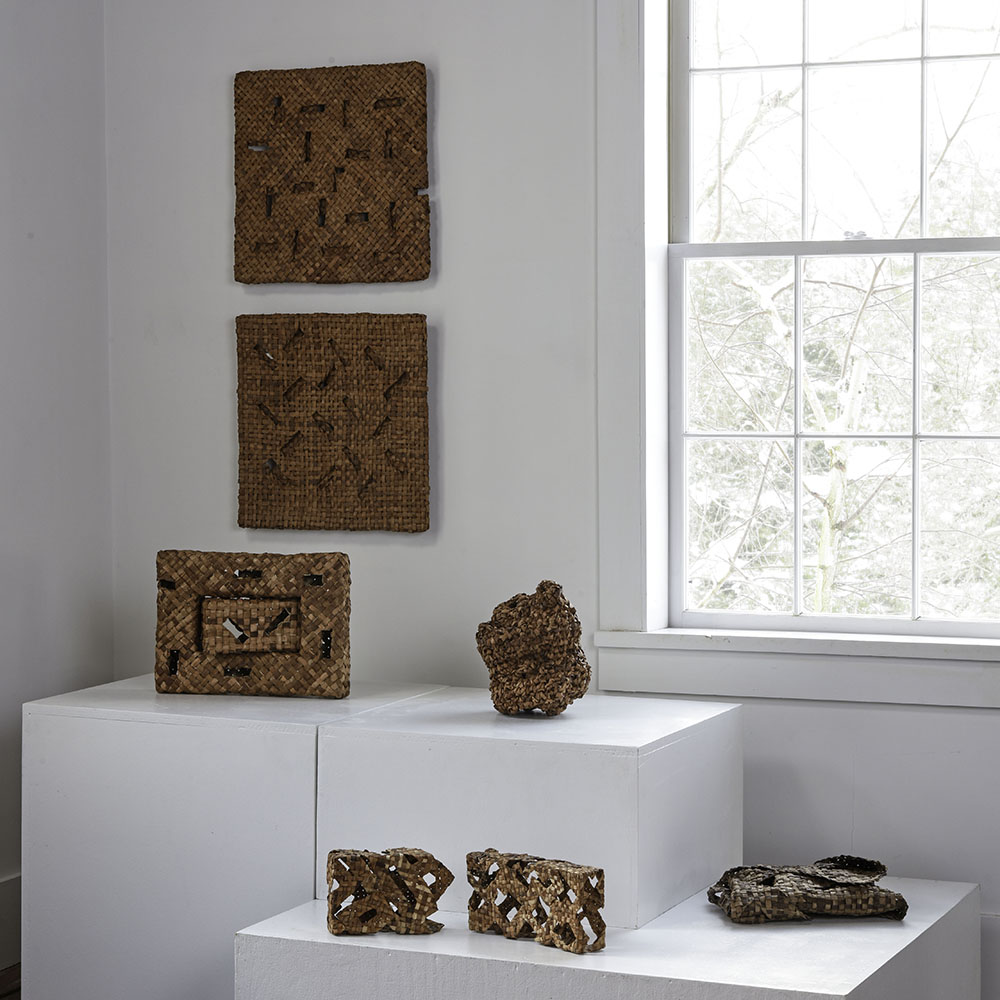
On the wall: Structural Discussion IV & V, plaited and woven cedar, 1997-98 from left to right: Structural Discussion VI, plaited cedar and walnut, 2016; Multiple Axis II, looped chamaecyparis (cyprus) and cedar, 2013; Structural Discussion I, plaited cedar, walnut, ginkgo, 1987; From 2 to 3 Dimensions V, plaited and folded walnut.


